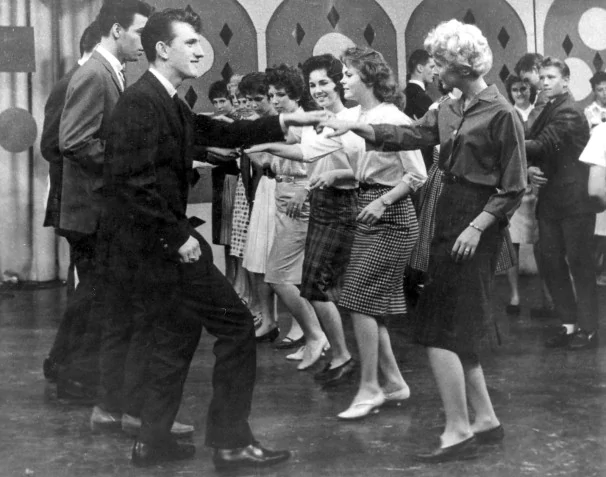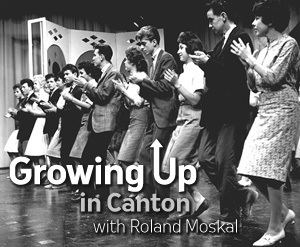First episode date 1957 | Genre Variety show | |
 | ||
Similar The Milt Grant Show, American Bandstand, The Clay Cole Show, Hairspray: The School Musical, Hairspray Live! | ||
Dancin the madison on the buddy deane show
The Buddy Deane Show was a teen dance television show, similar to Philadelphia's American Bandstand, that was created by Zvi Shoubin and aired on WJZ-TV in Baltimore, Maryland from 1957 until 1964. The show was taken off the air because home station WJZ-TV was unable to integrate black and white dancers. Its host was Winston "Buddy" Deane (1924-2003), who died in Pine Bluff, Arkansas after suffering a stroke, July 16, 2003. He was 78.
Contents
- Dancin the madison on the buddy deane show
- Dancin the madison on the buddy deane show 1
- Legacy
- References

Winston "Buddy" Deane was a broadcaster for more than 50 years, beginning his career in Little Rock, Arkansas, then moving to the Memphis, Tennessee market before moving on to Baltimore where he worked at WITH radio. He was one of the first disc jockeys in the area to regularly feature rock-and-roll. His dance party television show debuted in 1957 and was, for a time, the most popular local show in the United States. It aired for two and a half hours a day, six days a week. Hundreds of thousands of teens learned the latest dances of their day by watching Committee Members on The Buddy Deane Show.

Teenagers who appeared on the show every day were known as the "Committee." Committee members included Mike Miller, Charlie Bledsoe, Ron Osher, Mary Lou Raines, Pat(ricia) Tacey, and Cathy Schmink. Viewers often emulated the Committee members' dance moves, copied their personal style, and followed their life stories and interactions.

Buddy Deane organized and disc-jockeyed dances in public venues across the WJZ-TV broadcast area, across much of Maryland and Southern Delaware. At such events, tens of thousands of teenagers were exposed to live recording artists and TV personalities.

Many top acts of the day, both black and white, appeared on the show. Acts that appeared on The Buddy Deane Show first were reportedly barred from appearing on Dick Clark's American Bandstand. If they were on Bandstand first, however, they could still be on The Buddy Deane Show. Although WJZ-TV, owned by Westinghouse Broadcasting (now CBS), was an ABC affiliate, the station "blacked out" the network broadcast of American Bandstand in Baltimore and broadcast the Deane program instead, reportedly because Bandstand showed black teenagers dancing on the show (although black and white teenagers were not allowed to dance together until the show was moved to California in 1964). The Deane program set aside every other Friday when the show featured only black teenagers (the rest of the time, the show's participants were all white).
Owing to Buddy's mid-South roots and work history, he brought onto his show many performers from the ranks of Country and Western music (e.g., Skeeter Davis, singing "The End of the World" and Brenda Lee singing "Sweet Nothin's"), who then achieved cross-over hits among rock'n'roll fans. Buddy Deane also played songs that other disc-jockeys, often including Dick Clark, refused to present to mostly white teen TV audiences, because the acts sounded "too Black" (e.g., "Do You Love Me," by the Contours, or "Hide and Seek," by Bunker Hill). With an ear for music, seasoned by many more prior years as a disk jockey than, for example, Dick Clark, Buddy also brought to his audience a wider array of white musical acts than were seen on "American Bandstand." For example, Carole King appeared on the show, nearly a decade before she burst to popularity with her landmark 1970 album, "Tapestry," playing her 45RPM single "It Might as Well Rain Until September." (For another example, Dean featured English artist, Helen Shapiro, singing her Baltimore hit, "Tell Me What He Said," at about the time that the Beatles were on tour around England, playing on the same show bill with her.)
Dancin the madison on the buddy deane show 1
Legacy
The racial integration of a take-off of the show, dubbed the The Corny Collins Show, provides the backdrop to the 1988 John Waters movie Hairspray starring Divine and Ricki Lake, the Broadway musical Hairspray starring Harvey Fierstein and Marissa Jaret Winokur,the 2007 movie Hairspray featuring John Travolta and Nikki Blonsky, and the 2016 NBC television musical Hairspray Live! starring Fierstein and Maddie Baillio. Although he never appeared on Deane's show himself, Waters attended high school with a "Buddy Deaner" and later gave Deane a cameo in his 1988 film in which Deane played a TV reporter who tried to interview the governor who was besieged by integration protesters.
As with many other local TV shows, little footage of the show is known to have survived. When Barry Levinson, another Baltimore native, requested footage of the show for his film Diner, the station told him they had no footage.
